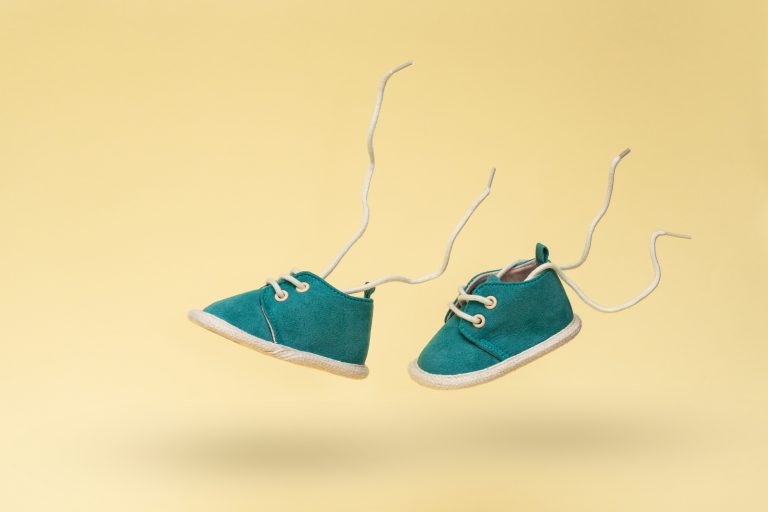The fragile nature of babies doesn’t bypass their skin and the problems parents can experience on their baby’s skin involve many. As nappies are an important part of a baby’s daily life, one of the most common skin issues mothers face is nappy rash.
What is nappy rash? Nappy rash is a generic term applied to skin rash in the nappy (diaper) area that can be caused by various factors. As it causes discomfort for babies, it causes concern for parents.
As upsetting as it is to see even the tiniest irritation on your baby’s face as a parent, nappy rashes are as easy to recognise and treat. Knowing about what are the causes and treatments of nappy rash can lead you to what should be done.
Common Causes of Nappy Rash
Nappies play a big role in babies’ lives and accompany them through many events of the day and because of that, nappy rash can be caused by many factors. What are the most common factors that cause nappy rash? Let’s explore.
- Long-term Exposure to Wetness in Nappy Area: Keeping a wet or soiled nappy on for extended periods can lead to skin irritation and lead to nappy rash.
- Friction: The constant rubbing of the nappy against the baby’s sensitive skin can cause irritation and redness, contributing to nappy rash.
- Bacterial or Yeast Infections: Infections caused by bacteria or yeast can thrive in the warm and moist environment of a nappy, causing or aggravating nappy rash.
- Sensitivity to Nappies or Wipes: Some babies may develop a sensitivity or allergic reaction to certain nappy materials, wipes, or ingredients in baby products, leading to skin irritation and nappy rash.
- Introduction of Solid Foods: As babies start eating solid foods, changes in their diet can sometimes lead to changes in their bowel movements, making the stools more acidic and irritating to the skin, contributing to nappy rash.
Recognising the Symptoms
Nappy rash causes discomfort for babies and concern for parents. To prevent nappy rash, it is important to be mindful of some issues in your daily life as a parent. Being mindful of these signs can help you treat them as swiftly as possible and can ensure a comfy baby, a better day, and happier parents. Let’s see what those symptoms are.
- Redness: The affected skin in the nappy area often appears red, which may range from mild to severe, covering a patchy or widespread area.
- Inflammation: The skin may be swollen, inflamed, and warm to the touch, indicating irritation and sensitivity due to nappy rash.
- Pimples, Blisters, or Peeling Skin: Some babies with nappy rash may develop pimples, blisters, or experience peeling skin in the affected area, suggesting increased skin irritation or potential infection.
- Discomfort or Irritability: Babies with nappy rash often show signs of discomfort, such as fussiness, crying during nappy changes, or avoiding being touched in the affected area due to pain or discomfort.
- Itching or Scratching: Babies may exhibit signs of itching or scratching the affected area, which can further aggravate the skin and contribute to the worsening of the rash.
Treatments for Nappy Rash
As easy as it is for babies to experience nappy rash from time to time, it is as easy to treat. Of course, it is always best to consult an expert, and it should be kept in mind that each product should be used with medical consultation if there are concerns regarding its contents. Here are some remedies to treat nappy rash:
- Barrier Creams or Ointments: Applying a protective nappy rash cream or ointment, such as one containing zinc oxide, can help soothe the skin, reduce inflammation, and create a protective barrier against irritants and moisture.
- Warm Baths with Oatmeal: Adding oatmeal to your baby’s warm bath can help soothe irritated skin, reduce inflammation, and provide relief from itching caused by nappy rash.
- Air-Drying: Allowing your baby’s skin to air-dry completely before putting on a fresh nappy can help reduce moisture and promote the healing of irritated skin.
- Change Nappy Brands or Types: If your baby frequently develops a nappy rash, it may be helpful to try different nappy brands or types to see if a specific material or ingredient is causing the irritation. Opting for breathable, hypoallergenic, or organic nappies may also help reduce the risk of nappy rash.
Preventive Measures
Like most health issues, nappy rash can also be prevented by adding or changing some habits in your baby’s daily routine. Taking precautionary steps can not only avert potential problems but also enhance your baby’s well-being. What can be done to prevent nappy rash? Let’s explore.
- Regular Nappy Changes: Frequently changing your baby’s nappy can help keep the skin dry and reduce the risk of irritation from prolonged exposure to wetness or soiled nappies.
- Use of Barrier Creams or Ointments: Applying a thin layer of barrier cream or ointment, especially one containing zinc oxide, can help protect your baby’s skin from irritants and moisture, acting as a protective barrier against nappy rash.
- Gentle Cleansing: Use mild, fragrance-free wipes or warm water and a soft cloth to gently clean your baby’s nappy area during nappy changes, avoiding harsh soaps or wipes that can irritate the skin.
- Allow Nappy-Free Time: Giving your baby some nappy-free time each day can help air out and dry the skin, reducing moisture and preventing the development of nappy rash.
When to Get Medical Advice?
Nappy rash might be an issue that is usually easy to treat and can be treated at home but like any other health problem, nappy rash can get severe or be an indication of another health problem. When the rash does not improve or worsens despite the remedies and care, if your baby develops blisters, sores, or open wounds in the nappy area or shows signs of a bacterial or yeast infection such as bumps or foul-smelling discharge, when the rash is accompanied by fever, lethargy or other systemic symptoms, it can be better to consult an expert before taking any further action.
If these symptoms do not exist but you are simply unsure about the cause of the rash or concerned about its severity and impact on your baby’s well-being, it is important to consult an expert before resorting to any remedy.
What Happens If You Don’t Treat Nappy Rash?
If nappy rash is left untreated, it can worsen and lead to more severe skin irritation and discomfort for your baby. The skin may become increasingly inflamed, red, and sensitive, making it more sensitive to bacterial or yeast infections. Prolonged exposure to irritants and moisture can also extend the healing process and increase the risk of complications, such as skin breakdown or open sores in the affected area. Additionally, untreated nappy rash can cause your baby to experience significant discomfort, leading to increased fussiness, sleep disturbances, and irritability. Because of these, swift and appropriate treatment is essential to manage nappy rash effectively and prevent further difficulties.




